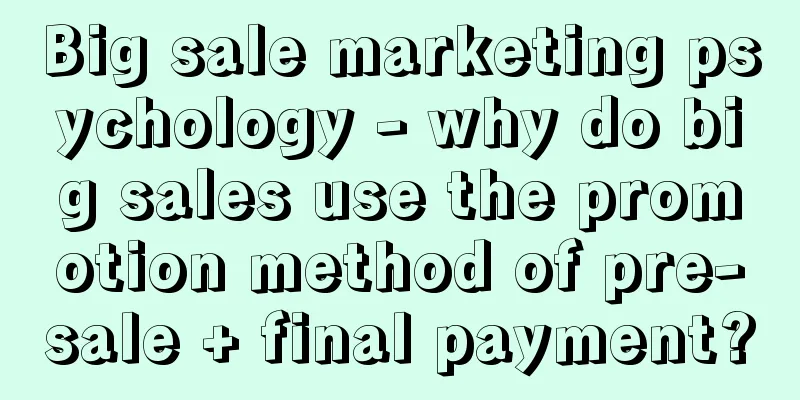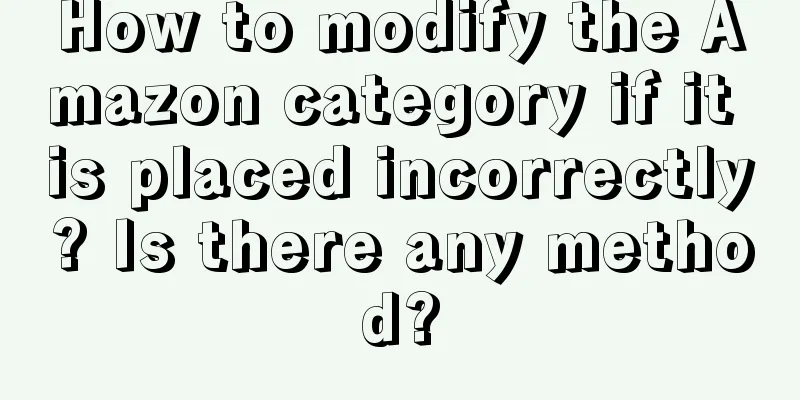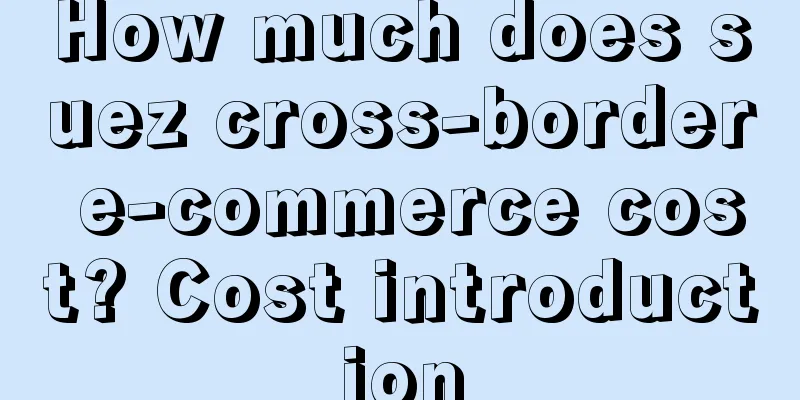Big sale marketing psychology - why do big sales use the promotion method of pre-sale + final payment?

E-commerce promotions have a history of more than ten years. From Taobao's initial so-called "half-price" discount to today's various promotional tactics, such as discounts on purchases over a certain amount, pre-sales, large coupons, etc., platforms and merchants are increasingly using various marketing methods to attract consumers' attention. These marketing campaigns are not only designed to attract consumers, but also to stimulate consumers’ dopamine. Dopamine is a neurotransmitter that is closely related to rewards and satisfaction. Merchants use clever settings to stimulate consumers’ dopamine levels, prompting them to buy more, faster, and more happily. There are many psychological marketing settings behind them. Today's article will explore the psychological mechanisms behind e-commerce promotion marketing and reveal the various psychological methods used by platforms and merchants during the promotion period. 01 Pre-sale + final payment - Zeigarnik effectSince the e-commerce promotion period has been extended, the platform has begun to use a very effective marketing method - pre-sale + final payment. For example, the 618 promotion starts with pre-sale on May 23 or 24, with a deposit paid first and the final payment paid on May 31. This almost extends the original 618 promotion period to one month. The method of pre-sale + final payment is a deliberate plan. If the big sale does not adopt this method, but directly announces that it will start normally from May 23, then consumers will know that the big sale period is long and will not pay attention to the start point of the big sale, and the volume of the start of the big sale will also become weaker. Consumers will think that since the time is so long, I will wait and see later. In this way, the significance of extending the promotion period is greatly reduced. For consumers, the pre-sale + final payment method uses the Zeigarnik effect to deepen their memory of the event. The Zeigarnik effect, also known as the Zeigarnik effect, refers to the fact that people are more likely to remember unfinished or interrupted things than completed things. To sum it up in one sentence: If you keep thinking about it, there will be a response. The consumer first paid a deposit during the pre-sale, but had to wait a week before paying the balance. During this week, he was always thinking about it and would check the goods he paid the deposit for every day, which virtually increased the platform's traffic and the possibility of buying other goods. This feeling could only be relieved after he paid the balance a week later. Because consumers paid a deposit during the pre-sale period, their attention and memory of the platform increased by one week. This week allowed the platform to increase traffic and more sales possibilities, and also made the duration of the promotion more stable. 02 Why is it a discount instead of a discount?It has almost become a consensus for e-commerce platforms to use the marketing method of full discount during big promotions, such as Tmall's 50 yuan discount for purchases over 300 yuan and JD.com's 50 yuan discount for purchases over 299 yuan during the 618 shopping festival this year. Why are e-commerce platforms less and less likely to offer direct discounts, but instead use full discounts? In terms of consumer decision-making behavior, it uses the principle of "mental accounting" to increase consumers' average order value. Psychological accounting refers to the fact that people psychologically allocate money to different accounts and make different psychological evaluations of each account. Let's take a simple example. Suppose you plan to spend 100 yuan to watch a movie tonight, but when you get to the cinema you find that you have lost 100 yuan. Will you continue to buy movie tickets to watch the movie? I believe you will. In the same situation, if you spend 100 yuan to buy a movie ticket in advance, but when you get to the cinema you find that the ticket is lost, will you spend another 100 yuan to buy another one? Many people will hesitate. Although both cases essentially result in a loss of 100 yuan, in the second case, people are unwilling to spend another 100 yuan on the ticket because they put the 100 yuan in cash and the 100 yuan movie ticket into different mental accounts. In the second case, people will feel that they have spent 200 yuan on a movie ticket, which is definitely hard to accept. (In fact, in the first case, people also spent 200 yuan on the movie ticket) Under the promotion strategy of full discount, consumers divide their shopping money into two psychological accounts: spent and saved. The amount after full discount is considered to be saved money and is placed in the "saved" account. The amount in this account is psychologically seen as an additional benefit or reward. Consumers think that the reduced money is an additional reward, so when making shopping decisions, they are more inclined to use this amount for further purchases, which increases the GMV of the platform. Under the influence of mental accounting, consumers will find that they add more and more items to their shopping carts, and end up buying a lot of goods they don’t need. 03 Why only give large coupons to members?Large member coupons are discounts specially launched by the platform for members in recent years. For example, JD PLUS members can get 600 yuan off for purchases over 6,000 yuan, 400 yuan off for purchases over 5,000 yuan, and 300 yuan off for purchases over 3,000 yuan. Tmall 88VIP members can get 400 yuan off for purchases over 5,000 yuan and 120 yuan off for purchases over 1,500 yuan. The characteristics of these discounts are that they are exclusive to members and the amount is much larger than the general discounts on the entire platform. The commercial value of large coupons for members is to target the high-value users of the platform, give them higher discounts, and encourage them to buy more goods. These users are often strategic users of the platform and the users the platform values most. The platform uses the scarcity effect and sunk cost effect when setting up large coupons for members. First, let's talk about the scarcity effect. The platform limits large coupons to members, creating a sense of scarcity, and they are only valid for a specific period of time. This gives members a sense of scarcity, and makes them feel special and advantageous, thus stimulating their desire to buy. At the same time, these discounts will also attract non-members to become members, because they don't want to miss out on these benefits and want to be one of those scarce people. Let's talk about the sunk cost principle. For example, JD Plus membership and Tmall 88VIP membership require consumers to pay to purchase membership and become members to enjoy exclusive benefits. The cost of purchasing membership is the sunk cost, that is, the money has been spent to purchase membership. If the membership benefits are not fully utilized, the previous investment will be wasted. In order to maximize the return on sunk costs, members tend to actively participate in activities during the promotion period and make full use of exclusive coupons to obtain more benefits, thereby increasing the motivation to buy. It is of strategic significance to attract more people to become members by setting up large coupons. JD Plus members and Tmall 88VIP members have actually formed a special membership group. They believe that they can enjoy different treatment from ordinary users. This behavior has stimulated members' recognition and loyalty to the platform, allowing members to form a long-term binding effect with the platform. The platform provides exclusive discounts for members, so members become strongly dependent on the platform and increase consumption, which forms a long-term and stable cycle effect. 04 Can installment payment alleviate payment anxiety?When you are ready to buy a product, the platform always hopes that you will not pay the bill all at once, but encourage you to pay in installments. Installment payment can indeed promote people's consumption. As the old saying goes, an iPhone costs 8,000 yuan, which can be divided into 24 installments, which is equivalent to free of charge. The platform's solution of installment payment for consumers is to reduce the pain of consumers when paying and also encourage them to place orders. Shopping certainly makes people happy, but experiments have shown that the moment when consumers pay is actually painful, especially when they see the cash in their hands being handed to someone else. In the Internet age, platforms are trying every means to alleviate this pain. Economists have conducted experiments to prove that when consumers consume, the amount they spend using credit cards is often more than twice the amount they spend using cash. Using cash to consume will make consumers feel the pain of losing something, while using credit cards to consume will postpone this pain. The more abstract the payment experience is, the less painful it is. Credit cards are more abstract than cash, and mobile payments are more abstract than credit card payments. In addition, the most effective way to ease the pain of payment is time. In a series of studies, George Levenstein of Carnegie Mellon University found that it was difficult to get someone to dance in a crowd, but when the dance was moved to a date a few days later, more people agreed. We agree to do things in the future that are unthinkable, or at least slightly out of character in the present. Why? Because imagining something in the future numbs our emotional impact on the present. As for payment, when you have to pay 8,000 yuan for an iPhone now, you will feel the pain, but when the bill is put off to the future, you will not feel so painful because the pain can be delayed, so you choose to buy the iPhone in installments. 05 Raise the price first and then lower it. Aren’t you afraid of being scolded?Before the big promotion period, it has become a common practice for merchants to raise prices first and then lower them. This practice is often criticized, but why do merchants continue to do this despite consumers' requests? The fundamental reason is that the benefits outweigh the disadvantages. The so-called price increase followed by price reduction actually means that the MSRP (Manufacturer Suggested Retail Price) is released first, and then the discount is announced. This actually takes advantage of the anchoring effect. Merchants use the MSRP to set a high price reference point and direct consumers' attention to this high price. When consumers see the higher price, they will think that this is the market price of the product, forming a psychological "anchor point". Then, when the merchant lowers the price, consumers will feel that the price is favorable because compared with the initial high price, the reduced price appears more reasonable and cost-effective. This comparison will make consumers feel that they are enjoying real discounts and offers, thus stimulating their desire to buy. In live streaming sales, the anchor will usually first give a very high original price, and then give a very low discounted price. The usual sales pitch is: "The original price of this product is 298 yuan, but it is only 98 yuan in my live broadcast room. If you buy it today, you will also get XX worth 99 yuan for free. XX, which originally costs 299, will be given away immediately if you place an order today. My dears, what are you waiting for..." It's the same principle. Raising prices first and then lowering them can also give consumers a sense of fear of missing out. When merchants raise prices, consumers may feel that they have lost the original low-price opportunity and worry that they will miss the opportunity to buy goods. Then, merchants break this sense of urgency by lowering prices, giving consumers a chance to regain the low-price discount to avoid missing out. This psychological effect of fear of loss motivates consumers to place orders. 06 What’s the point of getting rebates for five-star reviews?Most businesses know the power of negative reviews. The loss caused by one negative review is difficult to offset by ten positive reviews. Especially for new products, once the negative review rate is high, it will be difficult for the new product to win consumers. Therefore, businesses always hope that users will give them a positive review after completing the purchase. Many businesses will use the means of returning red envelopes or cash for five-star positive reviews to reduce negative reviews. The strategy of using rebates for positive reviews by merchants takes advantage of the principle of commitment and consistency. Commitment and consistency means that after making a commitment, people tend to maintain their consistency, even if the commitment is induced. The condition for merchants to give red envelopes to consumers is to ask them to give five-star reviews with pictures, which is equivalent to asking them to make a promise that the goods they bought are good. When consumers receive the red envelopes from merchants, they will keep their promise and give positive reviews. At this point, the merchant’s goal is achieved, but the benefits to the merchant do not end there. After purchasing a product, the consumer gives it a positive review. In order to maintain consistency with his promise, he firmly believes that the product is good even when the product encounters some problems. When others say that the product is not good, he will defend it. The merchant not only received positive reviews with a red envelope, but also gained users' long-term positive attitude towards the product. This rebate is really worth it. 07 ConclusionIn e-commerce promotion marketing, psychology plays an important role, helping merchants attract consumers, stimulate purchasing behavior and increase sales. We explored the application of a series of psychological principles in promotion marketing, including the scarcity principle, sunk cost principle, mental accounting, social identity, reciprocity principle and commitment and consistency principle. These principles create an environment conducive to promotion by manipulating consumers' psychological cognition, emotions and behaviors. The essence of these settings is to stimulate consumers' dopamine and drive their desire to complete their shopping. Author: Xunkong WeChat public account: Xunkong’s Marketing Revelation (ID: xunkong2005) |
Recommend
5 million likes hits are booming, but Douyin no longer has the miracle of increasing fans
The fan growth list in April still maintained a &q...
Amazon launches small and light logistics program
For small and light commodities with fast circulat...
What are the tips for setting up Lazada Super Affiliate Commission? What is the ratio?
There are many ways to promote Lazada products, su...
New Hope’s private domain analysis shows that customer acquisition has increased 10 times, with a repurchase rate of up to 50%. How do fast-moving consumer goods brands play in the private domain?
This article takes the New Hope Dairy Company, whi...
How to cancel a Wish store? How does the holiday mode of a Wish store work?
The market of cross-border e-commerce is huge. Amo...
Different Women's Day copywriting, no need to please women like this!
As the International Women's Day is approachin...
40 years of changes in New Year's goods: a history of consumption upgrade
Every Spring Festival, buying New Year's goods...
Can Meituan Live break the ceiling of local life?
Can the launch of live streaming on the Meituan AP...
How to operate eBay in one month? What should a novice operator do?
If you are just starting to sell on eBay, you can ...
Why has offline store design become a battleground for brand marketing?
Have you taken a citywalk today? As this simple an...
Xianyu "gives up" on Taobao
In the field of e-commerce, the positioning and st...
These 10 problems that users complain about are all fatal
The points that users complain about the most for ...
Competition among e-commerce companies has led to “refund only”
Why have e-commerce platforms started to implement...
How to evaluate the effect of Xiaohongshu after publishing
How does Xiaohongshu evaluate the results of its a...
How to make money from Turkish cross-border e-commerce? What should you pay attention to?
With the development of the global economy and the...









